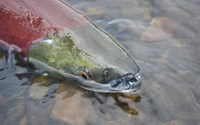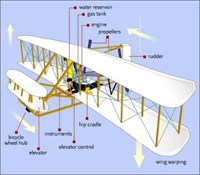- Lesson Plan (1,232)
- Field Trips (437)
- Distance Learning (296)
- Student Activities (253)
- Traveling Trunk (85)
- Teacher Reference Materials (73)
- Other Education Materials (68)
- Guest Speakers (54)
- Primary Sources (30)
- Science Labs (14)
- Media for Loan (12)
- Field Schools & Institutes (10)
- Teacher Workshops & Other Programs (7)
- Online Galleries (4)
- Teacher-Ranger-Teacher (3)
- Acadia National Park (131)
- Glacier National Park (90)
- Cowpens National Battlefield (76)
- Everglades National Park (66)
- Gateway Arch National Park (57)
- Olympic National Park (50)
- Fort Scott National Historic Site (48)
- Haleakalā National Park (45)
- Sleeping Bear Dunes National Lakeshore (39)
- Show More ...
- Social Studies (1,554)
- Science (1,164)
- Literacy and Language Arts (687)
- Math (243)
- Upper Elementary: Third Grade through Fifth Grade (1,141)
- Middle School: Sixth Grade through Eighth Grade (748)
- Lower Elementary: Pre-Kindergarten through Second Grade (297)
- High School: Ninth Grade through Twelfth Grade (273)
- Adult Education (26)
- Graduate Level (Masters (3)
- PhD) (3)
- College Undergraduate Level (2)
Showing 2,490 results for Sequoia Kings Canyon National Parks ...
Bryce Canyon National Park: Hoodoos Cast Their Spell
- Type: Lesson Plan
- Grade Levels: Middle School: Sixth Grade through Eighth Grade
The Battle of Kings Mountain
- Type: Student Activities
- Grade Levels: Upper Elementary: Third Grade through Fifth Grade
The Battle of Kings Mountain (October 7, 1780) was one of the most dramatic and hotly contested battles of the Revolutionary War. On an isolated ridge top in the Carolina backcountry, nearly 1000 American Patriots surrounded and overwhelmed an approximately equal number of American Loyalists.
Tactics in the Battle of Kings Mountain
- Type: Lesson Plan
- Grade Levels: Middle School: Sixth Grade through Eighth Grade
*How did the Kings Mountain area terrain and settlements effect the tactics in the Battle of Kings Mountain? *How were the tactics used at the Battle of Kings Mountain similar and different than other battles in the American Revolution? *How were the tactics used by loyalists and patriots at the Battle of Kings Mountain similar and different?
How Devastating Can It Be?
- Type: Field Trips
- Grade Levels: Middle School: Sixth Grade through Eighth Grade
The often dramatic and voluminous eruptions that occur on Kīlauea volcano can wipe out forest far from the actual eruption site. Using this field trip guide, students examine the aftermath of one such eruption on location; using scientific practice and historical evidence to understand the changes caused by the eruption, and how the land in the area is still changing today.
Lesson Guide: Exploring Geology at Grand Canyon National Park Video
- Type: Distance Learning
- Grade Levels: Upper Elementary: Third Grade through Fifth Grade
Join Ranger Sarah and her fellow rangers in this engaging journey through Grand Canyon National Park, where we uncover the geological wonders and cultural significance of this breathtaking landscape! From the South Rim to the North Rim and the depths of the canyon, discover how the canyon was formed and how it continues to change.
Can You Identify Me?
- Type: Lesson Plan
- Grade Levels: High School: Ninth Grade through Twelfth Grade
Students will have the opportunity to study and identify fish as really wildlife biologists. They will watch clips taken of salmon swimming up stream through the Silver Salmon Weir in Lake Clark National Park. Their job will be to use their identification cards and see how many salmon they can identify as they swim past. Be careful -- some salmon look awfully similar!
What are National Parks?
- Type: Distance Learning
- Grade Levels: Upper Elementary: Third Grade through Fifth Grade
- Type: Lesson Plan
- Grade Levels: Upper Elementary: Third Grade through Fifth Grade
Students will analyze the arrowhead logo as an introduction to the National Park Service. Students learn how the design of the National Park Service arrowhead is made up of symbols, and then have a chance to create their own design specific to Hawai‘i. We will then be introducing ways that we can help care for our parks through the 7 Leave No Trace principles, and help students to understand that the National Parks belong to each and every one of us!
What is a National Park?
What is a National Park?
- Type: Lesson Plan
- Grade Levels: Middle School: Sixth Grade through Eighth Grade
Students will analyze the arrowhead logo as an introduction to the National Park Service, an agency whose mission is to protect and preserve natural and cultural resources for future generations and provide visitors with opportunities for recreation and learning. Students learn how the design of the National Park Service arrowhead is made up of symbols, and then have a chance to create their own design specific to Hawai‘i.
What Is A National Park?
What Is A National Park?
- Type: Lesson Plan
- Grade Levels: Middle School: Sixth Grade through Eighth Grade
This activity challenges students to look at different pictures of national park sites and try to guess which park the picture represents. The pictures page gives a distinguishing feature of each park and an interesting fact to help students match to the list of possible choices.
Symbolism in National Parks
- Type: Distance Learning ... Primary Sources ... Student Activities
- Grade Levels: Lower Elementary: Pre-Kindergarten through Second Grade
Create a National Park
Our National Parks
"Create a National Park" National Parks: 4-6 Grade
Can You Solve It? A Scavenger Hunt
- Type: Lesson Plan
- Grade Levels: Upper Elementary: Third Grade through Fifth Grade
“Can You Solve It?” is a FIELD TRIP activity designed to engage students in an active exploration of the Chapin Mesa Archeological Museum. It complements a self-guided visit to Spruce Tree House nearby. Activity cards describe fictional scenarios that depict the life of Ancestral Pueblo people in A.D. 1200 to A.D 1275. Much like a scavenger hunt, students must locate objects, solve problems, and answer questions by examining exhibits, making observations, and recording what they find.

















